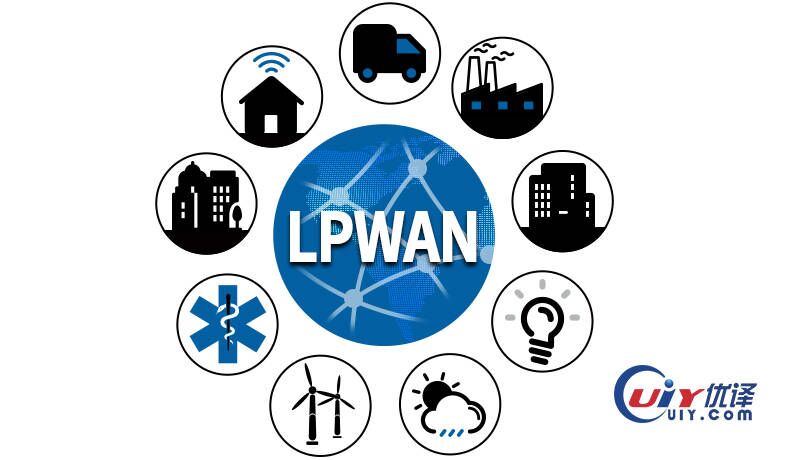A low-power wide-area network (LPWAN or LPWA network) is a type of wireless telecommunication wide area network designed to allow long-range communications at a low bit rate among things (connected objects), such as sensors operated on a battery. The low power, low bit rate, and intended use distinguish this type of network from a wireless WAN that is designed to connect users or businesses, and carry more data, using more power. The LPWAN data rate ranges from 0.3 kbit/s to 50 kbit/s per channel.
A LPWAN may be used to create a private wireless sensor network, but may also be a service or infrastructure offered by a third party, allowing the owners of sensors to deploy them in the field without investing in gateway technology.

LPWAN Attributes:
1. Long range: The operating range of LPWAN technology varies from a few kilometers in urban areas to over 10 km in rural settings. It can also enable effective data communication in previously infeasible indoor and underground locations.
2. Low power: Optimized for power consumption, LPWAN transceivers can run on small, inexpensive batteries for up to 20 years.
3. Low cost: LPWAN’s simplified, lightweight protocols reduce complexity in hardware design and lower device costs. Its long range combined with a star topology reduce expensive infrastructure requirements, and the use of license-free or licensed bands reduce network costs.
LPWAN Cons:
1. Not suitable for frequent data transfer applications: LPWAN does not support IoT applications that require frequent transmission of large volumes of data.
2. Low data rate: Since LPWAN only supports low data rates, it cannot be used for IoT applications that require higher data rates.
3. High risk of network congestion: When operating on the free radio spectrum, there may be a large number of operators on the same network frequency. Congestion on the free radio spectrum can cause interruptions in transmissions.
4. Not suitable for low latency applications: LPWAN is very unsuitable for low-latency IoT applications because the technology can only provide high latency between end-to-end nodes.
Technologies and Platforms:
Some competing standards and vendors for LPWAN space include:
- DASH7, a low latency, bi-directional firmware standard that operates over multiple LPWAN radio technologies including LoRa.
- Wize is an open and royalty-free standard for LPWAN derived from the European Standard Wireless Mbus.
- Chirp spread spectrum (CSS) based
- Sigfox, UNB-based technology and French company.
- LoRa is a proprietary, chirp spread spectrum radio modulation technology for LPWAN used by LoRaWAN, Haystack Technologies, and Symphony Link.
- MIoTy, implementing Telegram Splitting technology.
- Weightless is an open standard, narrowband technology for LPWAN used by Ubiik
- ELTRES, a LPWA technology developed by Sony, with transmission ranges of over 100 km while moving at speeds of 100 km/h.
- IEEE 802.11ah, also known as Wi-Fi HaLow, is a low-power, wide-area implementation of 802.11 wireless networking standard using sub-gig frequencies.
Ultra-narrow band
Ultra Narrowband (UNB), modulation technology used for LPWAN by various companies including:
- Sigfox, UNB-based technology and French company.
- Weightless, a set of communication standards from the Weightless SIG.
- NB-Fi Protocol, developed by WAVIoT company.
Typical Types of LPWAN IoT Devices
LPWAN IoT devices come in all shapes and sizes. These include LoRa, Zigbee, Sigfox, Nwave, LTE-M, and NB-IoT, among others. However, LoRa, NB-IoT, LTE-M and Sigfox account for more than 96% of the global LPWAN equipment installations. Typically, LPWANs can operate on licensed or unlicensed frequencies, including proprietary or open standard options.
LoRa
Unlicensed LoRa, developed by the LoRa Alliance has a moderate range, uses low power, and provides affordable connectivity to users. Designed for battery-operated devices, it facilitates interoperability between a wide variety of IoT devices without complex installation. With the ability to transmit on multiple frequencies up to several gigahertz, LoRa is less susceptible to communication interference. As one of the most promising networks, LoRa and NB-IoT are expected to gain about 85% of the network share by 2025.
NB-Internet of Things
Narrowband IoT (nB-IoT) performance is similar to other technology standards and can run on existing cellular IoT (LTE and GSM) infrastructure. By leveraging the cost and energy efficiency of LTE-M, NB-IoT can conveniently connect up to 50,000 IoT devices per NB-IoT cell. It also supports many new connections that use only a portion of its available spectrum. This helps minimize power consumption and extend the battery life of IoT devices to over 10 years.
LTE-M
This LTE-M is a typical LPWAN level released by the 3GPP standard organization. As one of the first generation of cellular technologies, LTE-M leverages existing LTE networks to ensure efficient network connectivity indoors and underground. It provides much higher bandwidth than NB-IoT. With LTE-M technology, there will be no need for multiple modules and variants. It offers latency and speed comparable to 3G networks.
Sigfox
As a widely accepted unlicensed LPWAN technology, Sigfox runs on public network infrastructure while allowing only one network operator per country. Since its data packet size is limited to 150 12-byte messages per day, it can achieve communication of more than 30km~50km in remote areas, 3km~10km in urban environments, and approx. 1,000 kilometers of communication.
| Parameters | LoRaWAN | NB-IoT | LTE-M | Sigfox |
| Bandwidth | 125 kHz | 180 kHz | 1.08MHz | 100 Hz |
| Coverage | 165 dB | 164 dB | 156 dB | 165 dB |
| Battery Life | 15+ years | 10+ years | 10+ years | 15+ years |
| Peak Current | 32 mA | 120 mA | 500 mA | 49 mA |
| Sleep Current | 1 µA | 5 µA | 9 µA | 1.3 µA |
| Throughput | 50 Kbps | 200 Kbps | 1 Mbps | 600 bps |
| Latency | Device Class Dependent | < 10 s | < 15 ms | < 30 s |
| Security | AES 128 bit | 3GPP (128 bit to
256 bit) |
3GPP (128 bit to
256 bit) |
AES 128 bit |
| Geolocation | Yes (TDOA) | Yes (3GPP Rel 14) | Yes (3GPP Rel 14) | Yes (RSSI) |
| Cost Efficiency | High | Medium | High | High |
| Power Consumption | Low | High | Low | Medium |



